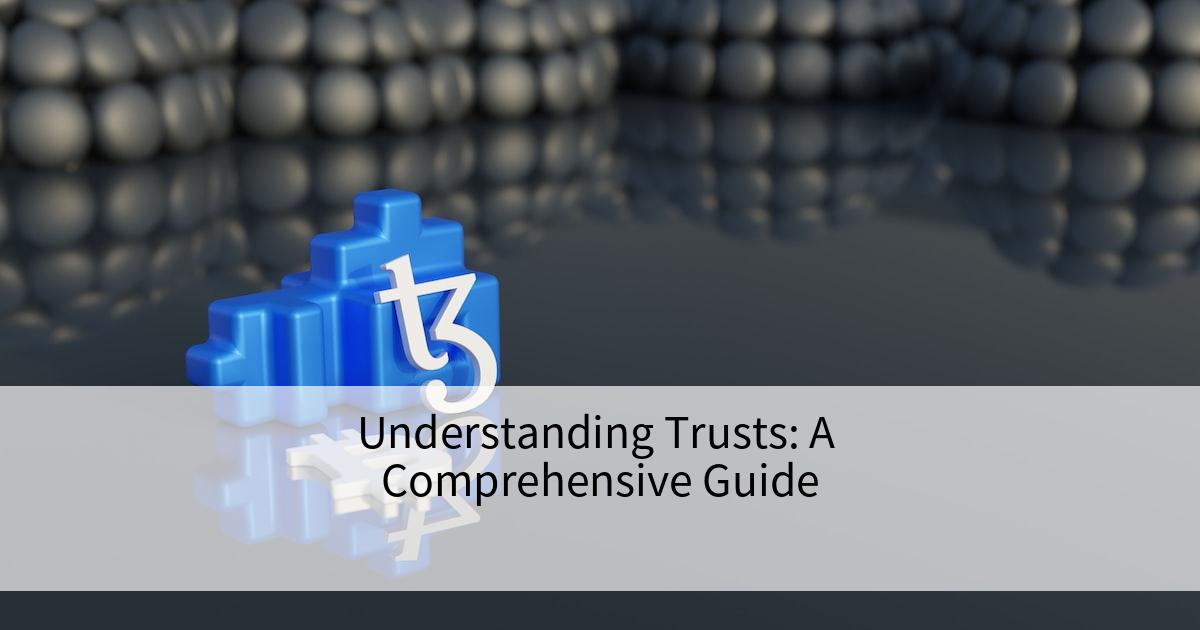
Introduction: Trusts play a vital role in estate planning and asset management, providing individuals and families with a powerful tool to protect and distribute their assets. In this comprehensive guide, we will explore the concept of trusts, their benefits, and how they can be utilized to achieve specific financial goals. Whether you’re new to the world of trusts or seeking to expand your knowledge, this article will provide valuable insights into this important financial instrument.
Section 1: What is a Trust? A trust is a legal arrangement where one party, known as the settlor or grantor, transfers assets to another party, the trustee, to hold and manage on behalf of beneficiaries. The trustee has a fiduciary duty to act in the best interests of the beneficiaries and follow the instructions outlined in the trust document.
Section 2: Benefits of Trusts 2.1 Asset Protection: Trusts can shield assets from creditors and legal claims, providing a level of protection for your wealth. 2.2 Probate Avoidance: Assets held in a trust can bypass the probate process, allowing for faster and more efficient distribution to beneficiaries. 2.3 Privacy: Trusts offer a level of privacy as they are not subject to public record, unlike wills and probate proceedings. 2.4 Control and Flexibility: Trusts allow you to specify how and when assets should be distributed to beneficiaries, providing control over your wealth even after your passing. 2.5 Tax Planning: Trusts can provide tax advantages and help minimize estate taxes, ensuring a more efficient transfer of wealth.
Section 3: Types of Trusts 3.1 Revocable Living Trusts: A flexible trust that can be modified or revoked during the settlor’s lifetime, commonly used for estate planning purposes. 3.2 Irrevocable Trusts: Trusts that cannot be easily modified or revoked, often used for asset protection and tax planning. 3.3 Charitable Trusts: Trusts established to support charitable causes while providing potential tax benefits to the settlor. 3.4 Special Needs Trusts: Trusts designed to provide for individuals with special needs without jeopardizing their eligibility for government assistance programs.
Section 4: Setting Up a Trust 4.1 Choosing a Trustee: Selecting a trustworthy and competent trustee is crucial for the successful administration of a trust. 4.2 Drafting the Trust Document: Engaging the services of an experienced attorney is essential to ensure the trust document accurately reflects your intentions and meets legal requirements. 4.3 Funding the Trust: Transferring assets into the trust is a critical step to ensure they are properly managed and distributed according to your wishes.
Conclusion: Trusts are powerful tools that offer numerous benefits, including asset protection, probate avoidance, and flexibility in wealth distribution. Understanding the concept of trusts and their various types is essential for effective estate planning and financial management. Consultation with legal and financial professionals is recommended to determine the most suitable trust structure for your specific needs and goals. By harnessing the power of trusts, you can secure your financial legacy and provide for future generations with confidence.
